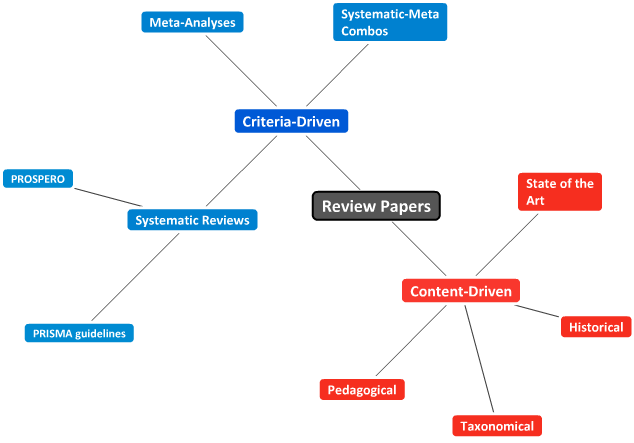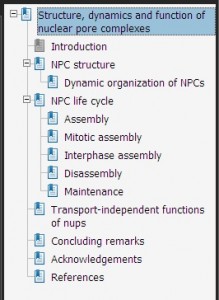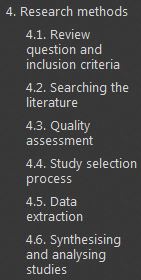“Review articles, including meta-analyses, are critical evaluations of material that has already been published. By organizing, integrating, and evaluating previously published material, the author of a review article considers the progress of current research toward clarifying a problem. — APA Style Guide, 2001, 7,
 What is a Review Paper? The APA guide goes on to say: “In a sense, a review article is tutorial in that the author defines and clarifies the problem; summarizes previous investigations in order to inform the reader of the state of current research; identifies relations, contradictions, gaps, and inconsistencies in the literature; and suggests the next step or steps in solving the problem.”
What is a Review Paper? The APA guide goes on to say: “In a sense, a review article is tutorial in that the author defines and clarifies the problem; summarizes previous investigations in order to inform the reader of the state of current research; identifies relations, contradictions, gaps, and inconsistencies in the literature; and suggests the next step or steps in solving the problem.”
It’s a forest and tree kind of situation: rather than reporting on a single study, the Review evaluates many studies in a research area with the intent of revealing a new or updated understanding of the field. Review papers are syntheses of published texts; the synthesis itself is motivated by the writer’s point of view (POV) on the material. The POV drives the review, and is reflected in the topical headings writers select.
When is a Review a “Literature Review”? When a text synthesizes literature on a topic, but does not include original experimentation or evaluation, it is called a Literature Review. Lit reviews can be stand-alone texts, and if you’ve been asked to write a “paper” about a topic, the most commonly expected form is the literature review, which has all of the parts of a Review paper except (usually) evaluation. To write this kind of paper, use all the parts of the Review paper material except the stuff about adding evaluation and making recommendations. (Lit reviews also play a role in research reports and proposals where the process of analysis and synthesis is the same, but the purpose of the lit review is quite different.)
For the WiDKB, we’ll use as our model Reviews as stand-alone publications (those published as articles in journals). Reviews combine functional headings (Introduction, Conclusion) with topical headings (headings that indicate content, a.k.a., the writer’s POV). Broadly speaking, reviews come in two flavors: criteria-driven and content-driven. Criteria-driven reviews feature a bibliography curated not only by topic, but by selection criteria at the level of the study itself — thus, a writer will use only research reports that include control groups or a specific population or time period. Such reviews include a functional Methods section that explains the search strategy. On their own, these reviews are called “systematic” because the final bibliography emerges from a combination of topic and selection criteria. When the search yields studies that are similar enough methodologically, then statistical tests can be run on the published results themselves, yielding a level of insight not obvious from words alone; these are meta-analyses, and while a species of review, they are organized using all the functional subheadings, along with topical headings.

In college, the most common type of review assignment is a state of the art review: “A state-of-the-art review presents an up-to-date, interpretative synthesis of our knowledge of a certain subject or issue, with emphasis on the most recent literature. For example, an author might look at what is currently known about the advantages and disadvantages of a particular surgical method for mastectomy, or a particular chemotherapy regime in the treatment of breast cancer.” –“How and Why Biologists Write”, Writing Papers in the Biological Sciences, McMillan, 2006, 114.
For our purposes, we’ll focus primarily on state-of-the-art reviews; nonetheless, the material can be used for any content-driven review. Where indicated, we’ll touch on systematic reviews, but will not be delving into the more complicated math-world of meta-analyses.
Content
- Review: Establish your POV
- Review Introduction: Path through the Woods
- Review Body: Topical Journey through the Literature
- Review Conclusions: Summary and Significance
- Action Plan for Writing Review Papers

